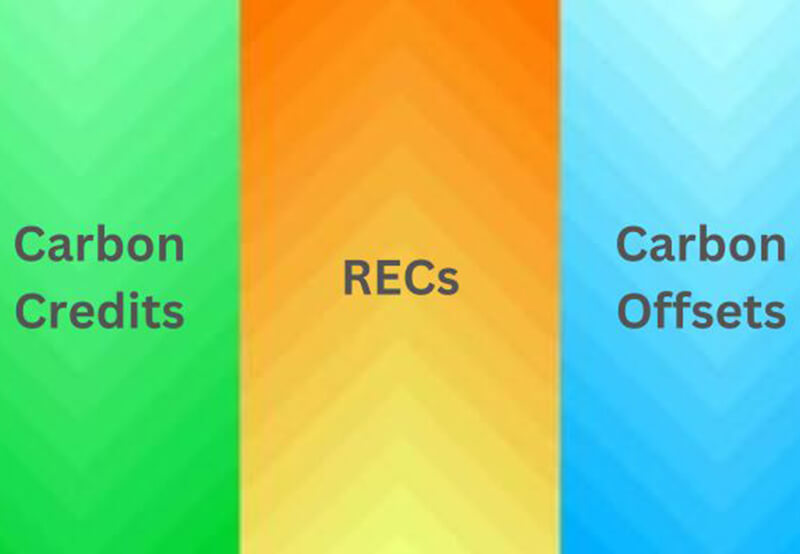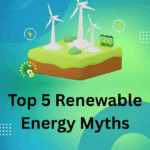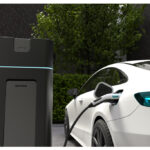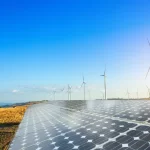Understanding Carbon Offsets, Carbon Credits, and RECs: A Simple Guide
Climate change is one of the most urgent challenges of our time, and people everywhere are looking for ways to make a positive difference. Companies, governments, and even individuals are taking steps to reduce their carbon footprints. However, the terms used in the climate space—like carbon offsets, carbon credits, and renewable energy certificates—can feel overwhelming at first.

In this guide, we will break these concepts down in a simple way so you can understand what are carbon offsets and how do they work, what is carbon credit, how do carbon credits work, what are renewable energy certificates, and how do renewable energy certificates work. By the end, you’ll see how each one plays a role in building a greener, cleaner world.
What Are Carbon Offsets and How Do They Work?
A carbon offset is a way to balance out the greenhouse gases you produce by funding a project that reduces or removes emissions elsewhere. Imagine you take a flight, which creates emissions you cannot avoid. Instead of doing nothing, you can pay for a project that plants trees or builds renewable energy facilities, helping to absorb or prevent the same amount of emissions you caused.
When people ask what are carbon offsets and how do they work, the answer is simple:
- You first calculate your emissions (like from travel or electricity use).
- Then, you support a project that reduces emissions somewhere else
- This balances your total environmental impact.
Carbon offsets are often used by individuals who want to neutralize the impact of their lifestyle, as well as by businesses looking to reach carbon-neutral goals. They are voluntary in many cases, but some industries also use them to meet regulatory requirements.
What Is Carbon Credit and How Do Carbon Credits Work?
Many people confuse carbon credits with carbon offsets, but they are not the same. If you are wondering what is carbon credit, think of it as a permit that allows a company to emit one metric ton of carbon dioxide or an equivalent amount of other greenhouse gases.
Here’s how do carbon credits work:
- Governments or international organizations set a limit (cap) on total emissions allowed.
- Companies receive or purchase a certain number of carbon credits based on this cap.
- If a company emits less than its limit, it can sell its unused credits to others.
- If a company emits more than its allowance, it must buy extra credits.
This system is known as cap-and-trade. It creates a financial reason for companies to cut emissions—because using fewer credits means saving money or earning profit by selling extras.
Carbon Offsets vs Carbon Credits
While both aim to reduce greenhouse gas emissions, they work differently:
- Carbon Credits are usually part of regulated systems, with strict caps and trading rules.
- Carbon Offsets are often voluntary and allow you to balance emissions by supporting eco-projects anywhere in the world.
For example, a factory might reduce its emissions to meet carbon credit rules while also buying offsets to further improve its environmental image.
What Are Renewable Energy Certificates (RECs)?
Renewable Energy Certificates (RECs) are a way to prove that electricity was generated from a renewable source like solar, wind, hydro, or biomass. Each REC equals one megawatt-hour (MWh) of renewable energy.
You might wonder what are renewable energy certificates and why they matter. The key point is that renewable electricity, once fed into the power grid, mixes with electricity from all sources—so it’s impossible to tell exactly where your power comes from. RECs solve this by tracking renewable generation at its source.
How Do Renewable Energy Certificates Work?
If you want to know how do renewable energy certificates work, here’s the process:
- A renewable energy facility (like a wind farm) generates electricity and feeds it into the grid.
- Along with the electricity, it issues RECs that prove this energy was renewable.
- RECs can be sold separately from the physical electricity.
- When you buy a REC, you are supporting renewable generation and claiming its environmental benefits.
For example, you could live in an area powered mostly by fossil fuels but still purchase RECs to match your electricity use with clean energy from somewhere else. This helps fund renewable energy growth and supports the clean energy market.
How They All Work Together
Carbon offsets, carbon credits, and RECs are different tools, but they share the same mission—reducing the impact of climate change.
- Offsets neutralize emissions by funding projects that remove or prevent greenhouse gases.
- Credits regulate and limit emissions through a government-led cap-and-trade system.
- RECs promote clean energy generation and track renewable energy usage.
A business might use all three together: cutting its direct emissions, buying carbon credits to meet regulations, purchasing offsets to go beyond requirements, and acquiring RECs to support renewable power.
Final Thoughts
Climate change can feel overwhelming, but learning about these concepts gives you real ways to take action. Whether you buy carbon offsets to balance your travel, purchase RECs to support renewable power, or advocate for better carbon credit policies, each choice contributes to a cleaner planet.
By understanding what are carbon offsets and how do they work, what is carbon credit, how do carbon credits work, what are renewable energy certificates, and how do renewable energy certificates work, you can make informed decisions and be part of the solution—no matter your role or location.
Frequently Asked Questions (FAQs)
Carbon credits are often used in regulatory markets and allow a specific amount of emissions. Carbon offsets are typically part of voluntary schemes where emissions are balanced by funding environmental projects. In many voluntary markets, the terms are used interchangeably, though technically, they originate from different systems.
Yes. Many organizations offer verified offsets to individuals—perfect for offsetting travel, household emissions, or even personal lifestyle choices.
No. RECs represent clean energy generation, while carbon offsets represent emissions reductions or removals. RECs can indirectly reduce emissions by displacing fossil fuels, but they’re not counted in the same way as carbon offsets.
Look for third-party certifications such as Gold Standard, Verified Carbon Standard (VCS), or Climate Action Reserve. These standards ensure the project is real, measurable, additional, and permanent.
Businesses often use carbon credits to reach carbon neutrality or net-zero emissions goals. RECs are used to claim renewable energy use. Reporting should clearly distinguish between emissions reductions, offsets, and green energy procurement.











